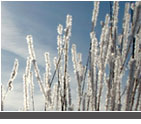
| |
How do you tell when Spring
has arrived? In central Alaska a contest has been held
for over 80 years to predict the breakup of ice in the Tatana
River.
The ice does not break up at the same time each year. The air temperature,
ice thickness, snow cover, wind, water temperature, and depth of
water below the ice all affect the breakup time. The ice usually
breaks up in late April or early May. The time this happens over
different years may indicate changes in climate.
(Web link requires
an Internet connection)
|
|
 |
| |
In November 2000, Ann Bancroft
and Liv Arnesen became the first women to cross Antarctica
in the longest ski trek ever by women. Their expedition
was broadcast over the internet to an audience of three
million students.
In the spring of 2005 Ann and Liv will attempt to become the first women
to cross the Arctic
Ocean. Educational opportunities and curriculum can be found
at their Web site. (http://www.yourexpedition.com)
(Web link requires
an Internet connection) |
|
 |
|

| |
The
Journey North is a web-based project to track
animal migration in the spring. Journey North is a free
on-line educational service, supported by the Annenberg/CPB
Math and Science
Project.
“The journeys of a dozen migratory
species are tracked
each spring. Students share their own field observations
with classrooms across the Hemisphere. In addition,
students are linked with scientists
who provide their expertise directly to the classroom. Several migrations
are tracked by satellite telemetry, providing live coverage of individual
animals as they migrate. As the spring season sweeps across the Hemisphere,
students note changes in daylight, temperatures, and all living things
as the food chain comes back to life.”
(Web link requires
an Internet connection) |
|
 |
|





